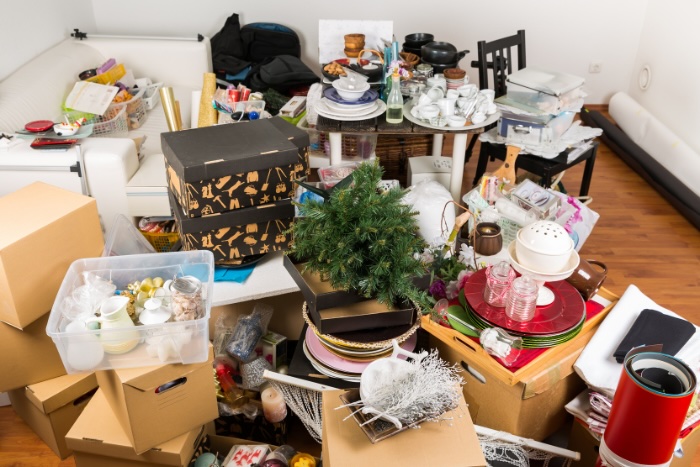
Decluttering your home might initially feel like scaling a mountain: scary, exhausting, and seemingly never-ending. But fear not – with the right strategy, this mountain transforms into a manageable molehill.
Imagine turning your home into a clean, orderly living space – it’s not just a dream. We’ll guide you through a practical, step-by-step approach that makes decluttering not only doable but surprisingly satisfying.
Ready to get started? Let’s get started decluttering, one room at a time. Get ready to reclaim your space and find a little more peace of mind. Let the decluttering adventure begin!
How To Easily Declutter Your Home
**Click to auto scroll by section.
Define Your Decluttering Goals
Remember, it’s a marathon, not a sprint. Set achievable goals and tackle one area at a time. This approach will help to keep you motivated and ensure that you don’t get overwhelmed. Before you start digging through each and every room, it is important to prioritize. Decide what needs to be done now and what can be cleared out later.
Break the Project Down
Decluttering your entire home at once can be a huge project. It gets way easier when you break it down into smaller parts. Think about doing just one or two rooms each weekend.
Plan it out ahead of time, maybe start with just your bedroom and the bathroom one weekend. This way, it doesn’t feel like too big of a project and you won’t feel the need to rush.
You’ll also get to see your progress, room by room. It’s like winning a little victory every time you finish a room. Before you know it, your whole house is clutter-free. It’s all about taking small steps to win big!
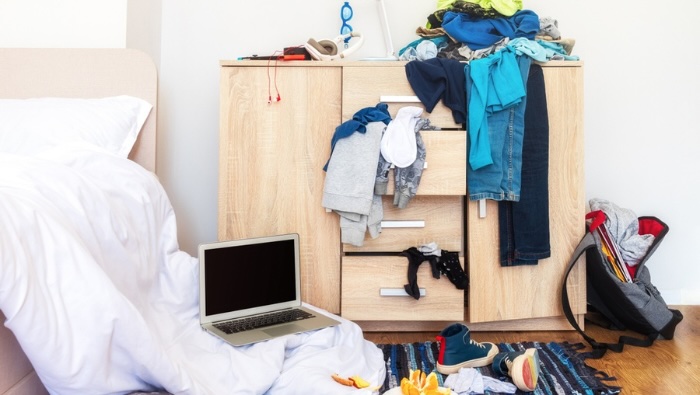
Set a Realistic Timeframe
It’s key to set a realistic timeline when decluttering your home. Think about how much time you can really spend each day or week clearing out and organizing your house. Maybe it’s just an hour or two on Saturdays, and that’s okay.
Giving yourself enough time means you won’t feel stressed or rushed. If you rush yourself, you may not do too great of a job at getting rid of things that you don’t need, or even worse – you could throw away something that you do need!
This way, decluttering becomes a smooth, doable task, not a race against the clock. Take it easy and work at a steady pace – you’ll get there.
Decluttering Tip: Make it manageable – set a timer for 15 minutes and clean until it goes off. This will help to keep you from feeling overwhelmed and keep you motivated!
Tips for Organizing & Sorting Clutter
Sorting through years of clothes, books, games, and, well, clutter, can seem tough at first, but with a few simple tips, it gets way easier. We’ll walk you through how to streamline the process, make smart decisions on what to keep or let go, and organize what’s left.
Organize Items into 3 Groups: Keep, Donate, Discard
There’s no need for a complicated organization system when decluttering your home. The best approach is to keep it simple: just separate your items into three piles – keep, donate, and discard.
Keep: Put items that you use often or want to keep in this pile. Don’t fall into the trap of thinking you need to keep everything. Remember – the goal is to get rid of things.
Donate: Place items that are still in good shape but aren’t needed by you anymore in this pile. Even though you may not need it, old items can still be useful for someone else.
Discard: All of the garbage, junk, and random pieces of who-knows-what go here. Throwing everything directly in a heavy-duty garbage bag will save you time.
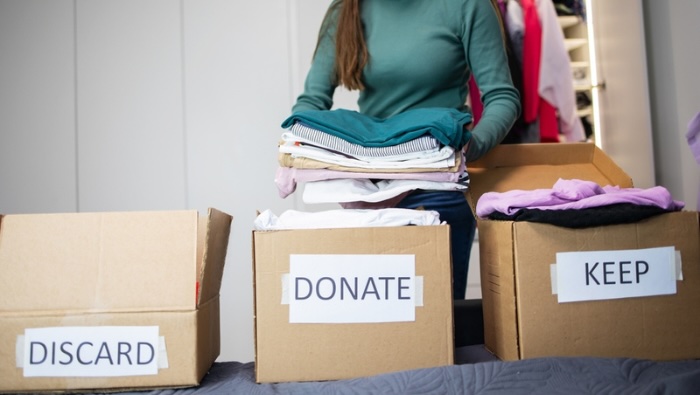
Don’t Forget These Decluttering Rules
If you are having a hard time deciding on what to keep and what to donate or throw out, remember the following rules.
20/20 Rule: If you can replace it for less than $20 and under $20 minutes, consider getting rid of it.
80/20 Rule: We use 20% of our belongings 80% of the time. Donate, store, or get rid of the 80% that you don’t use.
5 Second Rule: If you can’t remember the last time you used an item within 5 seconds, either donate or dispose of it.
Pro Tip: If you haven’t used an item in the last 12 months, it’s a strong candidate for removal. This is particularly effective for clothes, kitchen gadgets, and other household items that tend to accumulate without regular use.
Storage Solutions for Items You Are Keeping
When you’re keeping items after decluttering, finding the right storage is important. For smaller stuff, clear plastic totes are a great option. You can see what’s inside without opening them, and they keep dust out.
For clothes, try using drawer organizers or hanging shelves in your closet to keep them neat. Medicine can go in a small, labeled box in a cool, dry place. Toys? Use bins or baskets where kids can easily grab and put them back.
In the kitchen, use shelf organizers for spices and pantry items, and stackable bins for fridge organization. For documents and papers, file organizers work well.
Remember, the goal is to have a specific place for everything, making it easy to keep your home tidy and decluttered.
Creating a Home Decluttering Plan
Creating a decluttering plan is easiest when you go room by room. We’ll show you how to clean up each room, one at a time. Whether it’s your crowded bedroom or cluttered kitchen, our easy-to-follow strategy will have you on the way to a clutter-free home in no time.
Bathroom
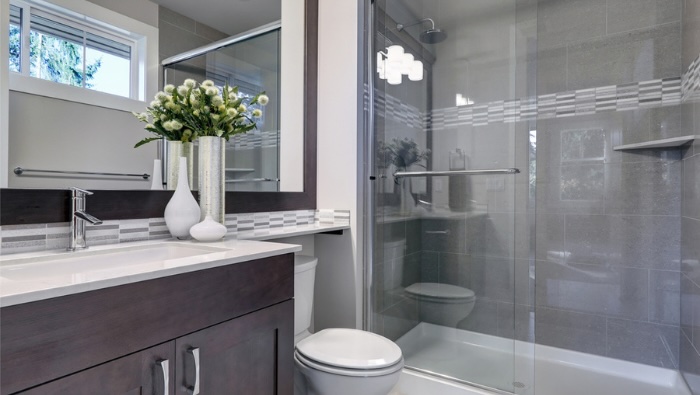
Drawers & Medicine Cabinet: First, empty out the medicine cabinet and all drawers. Throw away old medicine, makeup, and health products. Then, put back anything that you still use, keeping products you use daily in the front.
Shower & Sink: Clear out your shower, countertop, and anything that you store under your bathroom sink. Discard anything that is old, empty, or you don’t use anymore. Put back only the essentials, you probably aren’t using that half-empty bottle of conditioner from 4 years ago.
Bedroom
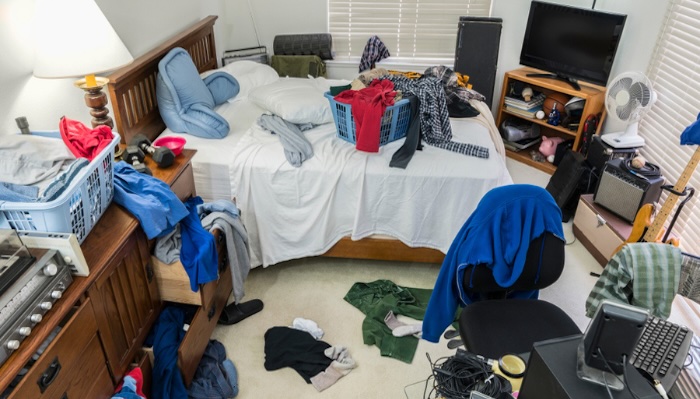
Nightstand: Start by removing everything from your nightstand. Sort through the items, keeping only essentials like your alarm clock, books, or a lamp. Discard or donate anything that you don’t need. Put back and organize the remaining items.
Dresser & Drawers: Empty out your dresser and all drawers. Sort through your items, keeping only those you frequently use – remember the 5 second rule. Donate or discard clothes that no longer fit or are worn out. Organize the remaining clothes and put them back into the drawers. Use drawer organizers if needed.
Closets: Start by removing everything from your closet. Say goodbye to clothes you haven’t worn in a year and those old shoes hiding in the back. Keep your favorite clothes and use hanging shelves and clothes hangers to keep everything tidy.
Kitchen
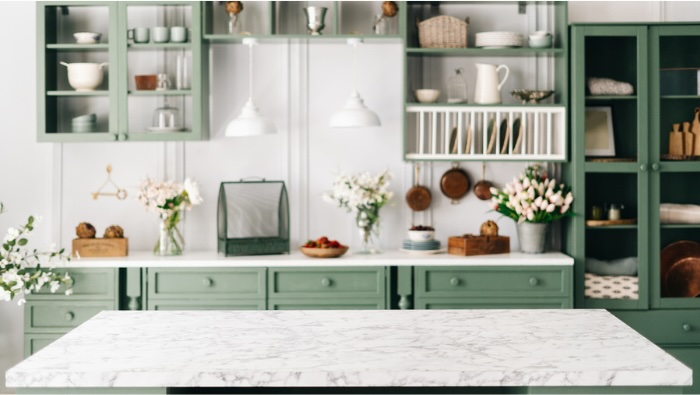
Decluttering your home can get more difficult and time-consuming when you reach the kitchen. In many households, the kitchen is the main area where most of the action happens.
You may have a lot of different pots, pans, utensils, bowls, tupperware and many more things that you need to sort through. A big part of decluttering your kitchen is to organize effectively and to get rid of old kitchenware.
Kitchen Clutter: Because the kitchen is one of the most frequently used rooms in most houses, it is ideal to declutter your kitchen regularly.
Cabinets & Drawers: To declutter your kitchen cabinets and drawers, start by removing all items and categorizing them: pots with pots, pans with pans, and so on. Use shelf risers or drawer organizers for efficient storage. Toss out any kitchen equipment that’s damaged, worn out, or rarely used. Place frequently used items in accessible spots and store seldom-used items higher up or in the back.
Pantry: Organizing your kitchen pantry often involves clearing out a surprising amount of clutter. Start by removing everything and checking expiration dates, discarding old spices and expired food. It’s common to find many items that can be thrown away. Neatly arrange the remaining goods, grouping similar items together for easy access and a clean, orderly pantry.
Refrigerator: Start with removing all items from your refrigerator. Check expiration dates and toss anything outdated or spoiled. Wipe down shelves and drawers with a mild cleaner to eliminate spills and crumbs. Then, organize the remaining food by category, like dairy, produce, and leftovers, for easy access and a fresh, tidy fridge.
Living Area
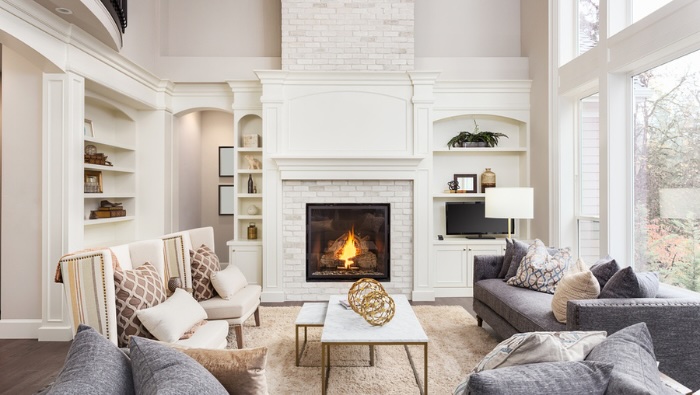
Furniture: Begin decluttering your living room by clearing out bookcases, consoles, and side tables. Next, focus on your coffee table and entertainment center. Clear them out and see what you have. Sort and return items to their correct spots. Neatly arrange books, minimize newspapers, and ensure remote controls are back where they belong.
Electronics: Over time, gaming consoles, DVD players, Blu-Ray players, and various electronics can seem to stack up in your living room. Sort through these and remove any old, unused electronics and put them in the donation or disposal pile. Store any charging cables in the appropriate area.
Like the kitchen, your living room or family room tends to be one of the hardest areas to declutter due to the amount of use it gets. Ongoing cleaning and organization here will pay off – the TV remote will be easier to find!
Unwanted Item Donation and Disposal
After decluttering your home, you’ll most likely have a large pile of items that you need to get rid of. If these items are in decent shape, they can be donated to someone who can use them. Think about clothes, furniture, or electronics that still have some life in them. For anything that’s past its prime, proper disposal is key to avoid cluttering landfills unnecessarily.
Have items for donation or disposal? BOOK A PICKUP❯
You can either bring items for donation or disposal yourself, or for an easier option, use a junk removal service like LoadUp. We’re here to help make decluttering your home stress-free.
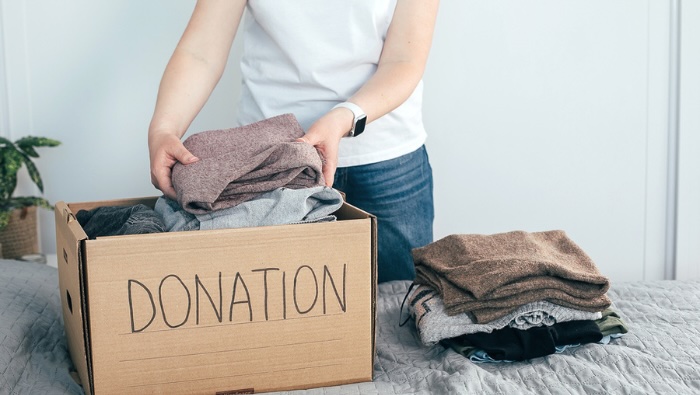
With LoadUp, you can easily schedule a pickup right from your phone using our online booking system. Our upfront pricing means no surprises – you’ll know exactly what the service will cost, right from the start.
Need quick service? No problem! We offer same day or next day pickups to fit into your busy schedule. And the best part? You don’t have to lift a finger. Our team will handle all the heavy lifting, ensuring your unwanted items are either donated or disposed of responsibly.
Maintaining a Clutter-Free Home
Keeping your home clutter-free is simpler than you think! Make it a habit to sort through your home every few months. Ask yourself, “Do I need this? Have I used it recently?” If not, it might be time to say goodbye.
Maintaining your clutter-free home after a big decluttering project isn’t just about cleaning up once; it’s about creating habits that last. Remember, it’s easier to stay clutter-free than to declutter over and over again.Try to adopt a ‘one in, one out’ rule. When you get something new, find something old to donate or throw away. This helps items from stacking up and becoming a problem over time.
Keep things organized in labeled boxes or shelves, so everything has its place. Remember, less is often more! And if you ever feel overwhelmed, LoadUp is just a click away to help clear out the clutter. Keep smiling, keep sorting, and enjoy the peaceful, clutter-free space you’ve created!
Related Articles from the Trash Talk Blog:

